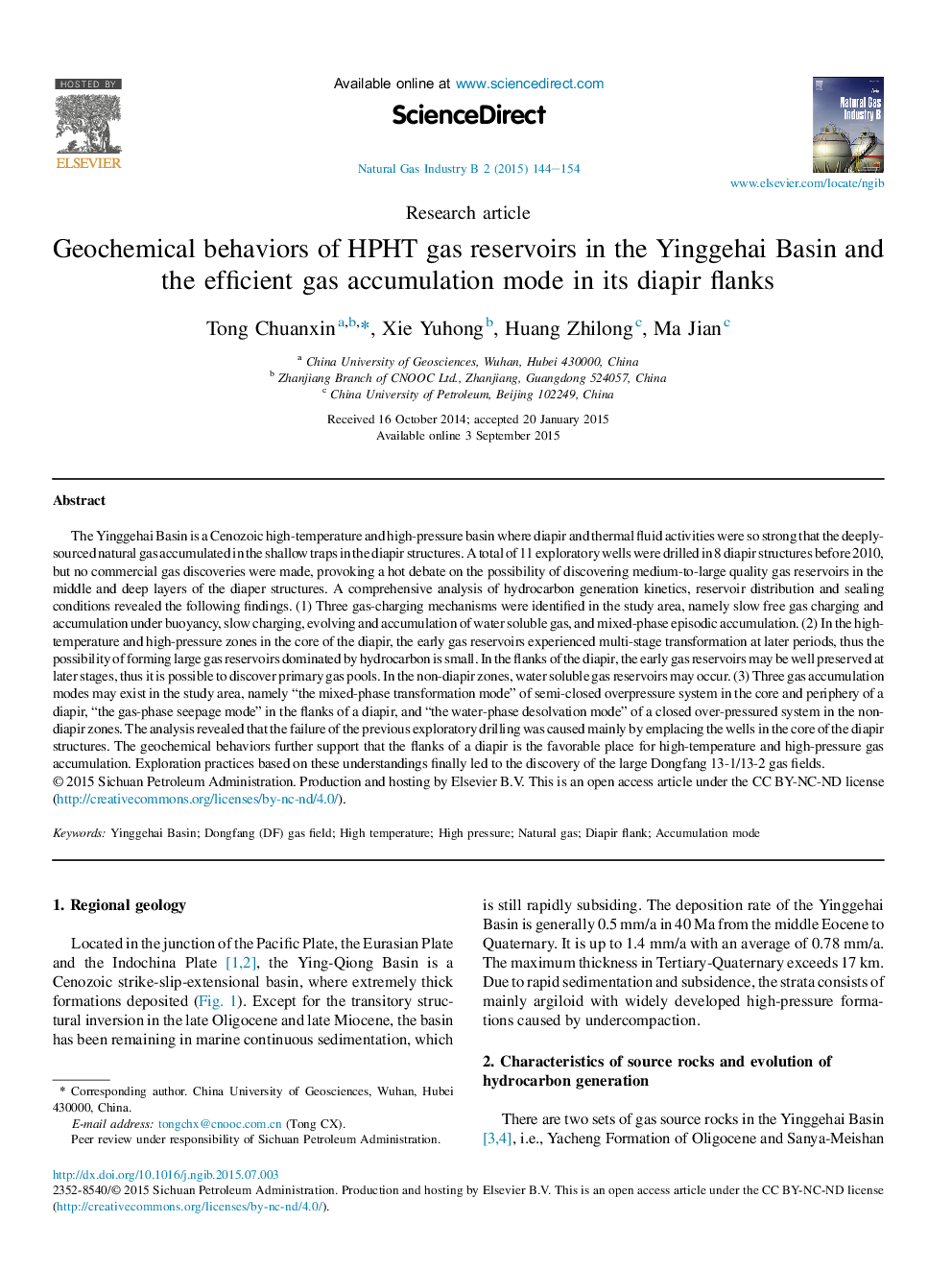| Article ID | Journal | Published Year | Pages | File Type |
|---|---|---|---|---|
| 1747772 | Natural Gas Industry B | 2015 | 11 Pages |
Abstract
The Yinggehai Basin is a Cenozoic high-temperature and high-pressure basin where diapir and thermal fluid activities were so strong that the deeply-sourced natural gas accumulated in the shallow traps in the diapir structures. A total of 11 exploratory wells were drilled in 8 diapir structures before 2010, but no commercial gas discoveries were made, provoking a hot debate on the possibility of discovering medium-to-large quality gas reservoirs in the middle and deep layers of the diaper structures. A comprehensive analysis of hydrocarbon generation kinetics, reservoir distribution and sealing conditions revealed the following findings. (1) Three gas-charging mechanisms were identified in the study area, namely slow free gas charging and accumulation under buoyancy, slow charging, evolving and accumulation of water soluble gas, and mixed-phase episodic accumulation. (2) In the high-temperature and high-pressure zones in the core of the diapir, the early gas reservoirs experienced multi-stage transformation at later periods, thus the possibility of forming large gas reservoirs dominated by hydrocarbon is small. In the flanks of the diapir, the early gas reservoirs may be well preserved at later stages, thus it is possible to discover primary gas pools. In the non-diapir zones, water soluble gas reservoirs may occur. (3) Three gas accumulation modes may exist in the study area, namely “the mixed-phase transformation mode” of semi-closed overpressure system in the core and periphery of a diapir, “the gas-phase seepage mode” in the flanks of a diapir, and “the water-phase desolvation mode” of a closed over-pressured system in the non-diapir zones. The analysis revealed that the failure of the previous exploratory drilling was caused mainly by emplacing the wells in the core of the diapir structures. The geochemical behaviors further support that the flanks of a diapir is the favorable place for high-temperature and high-pressure gas accumulation. Exploration practices based on these understandings finally led to the discovery of the large Dongfang 13-1/13-2 gas fields.
Related Topics
Physical Sciences and Engineering
Energy
Energy Engineering and Power Technology
Authors
Chuanxin Tong, Yuhong Xie, Zhilong Huang, Jian Ma,
